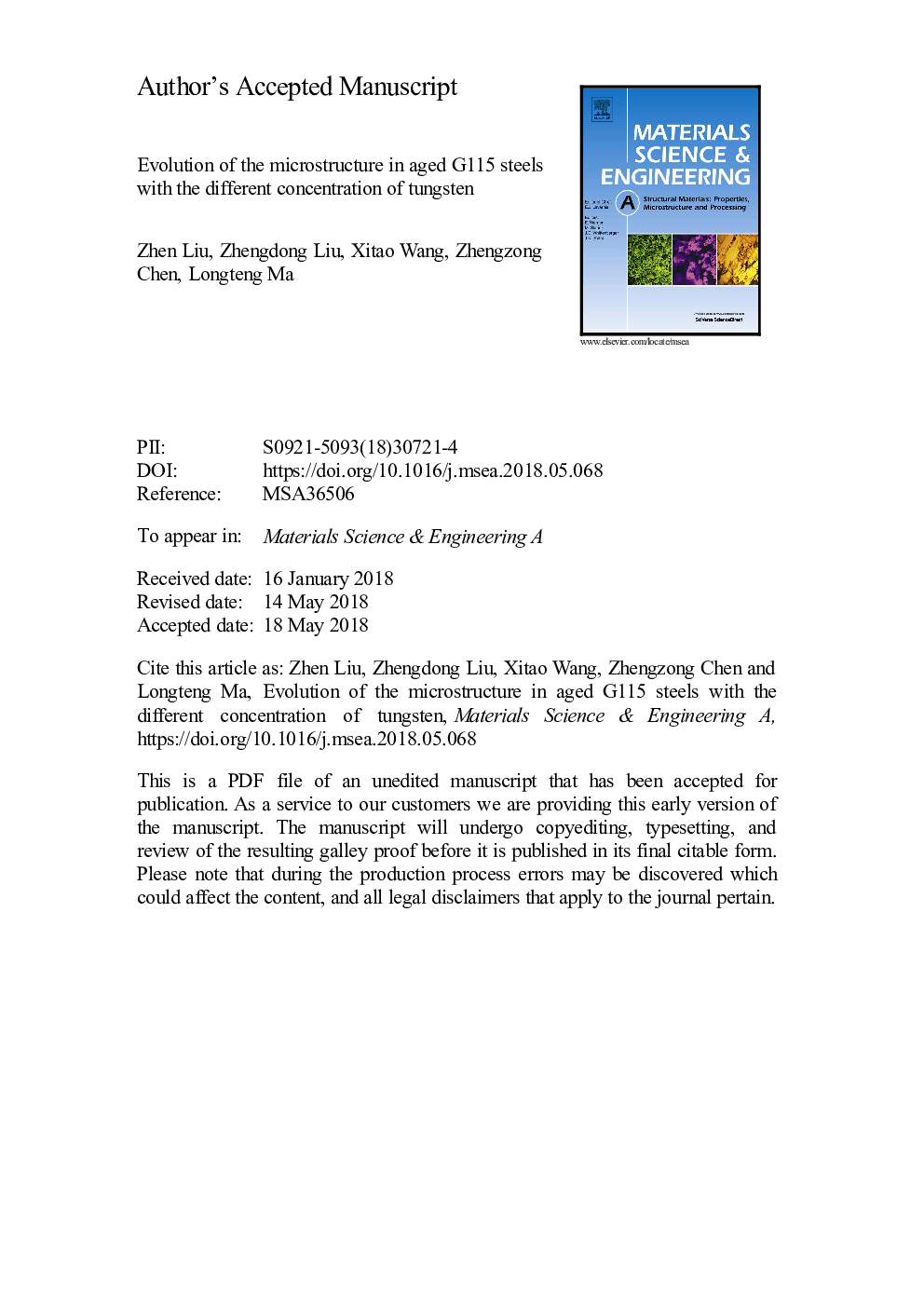| Article ID | Journal | Published Year | Pages | File Type |
|---|---|---|---|---|
| 7971899 | Materials Science and Engineering: A | 2018 | 20 Pages |
Abstract
The microstructural evolution and certain mechanical properties of three G115 steels, 9 Cr-(2.3, 2.6, 3.0) W-3 Co (wt%), were investigated after thermal aging at 675â¯Â°C for different times using optical microscopy, field emission transmission electron microscopy, X-ray diffraction, post-aged tensile tests and impact tests, focusing on martensitic lath, dislocations and precipitates. The results show that the coarsening rates of the lath and Laves phase particles increased with the increase in W concentration during thermal aging. The rates of the decreases in the dislocation and particle densities of the Laves phase particles increased with the increase in W concentration during thermal aging. Both the coarsening rates of the lath and precipitates (i.e., M23C6 and Laves phase particles) and reduction rate of the dislocation density are higher in the first 1000â¯h compared to those in the following 4000â¯h during the thermal aging process. As predicted using the Orowan stress formula, the 2.3W G115 steel revealed the best creep strength during service, among the three steels.
Related Topics
Physical Sciences and Engineering
Materials Science
Materials Science (General)
Authors
Zhen Liu, Zhengdong Liu, Xitao Wang, Zhengzong Chen, Longteng Ma,
